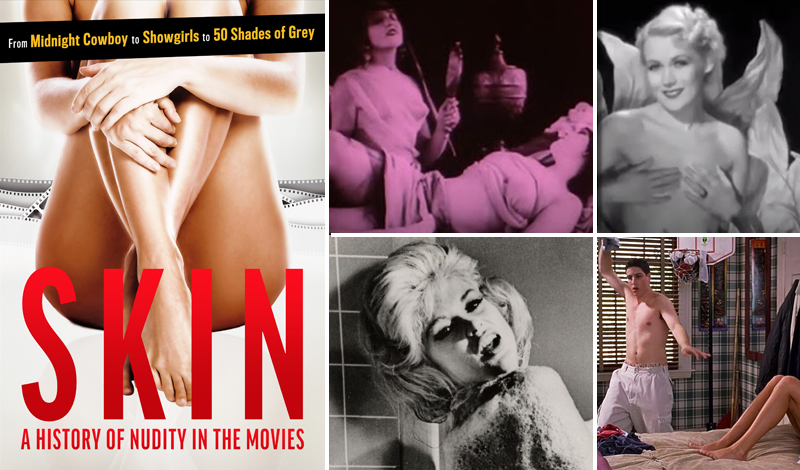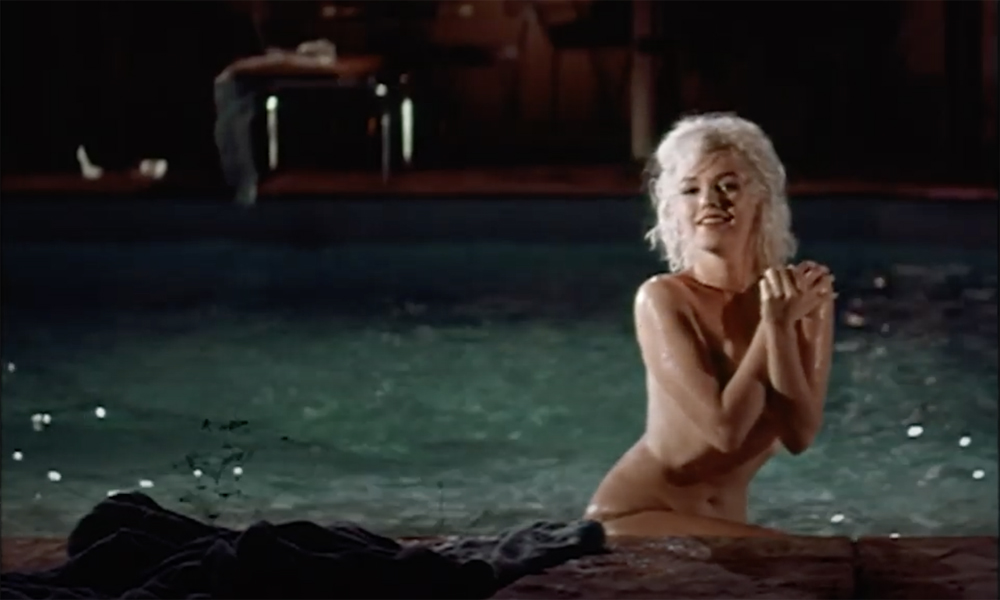Skin: A History of Nudity in the Movies is the definitive documentary on the history of nudity in the movies…
By David-Elijah Nahmod
“If I hadn’t done nudity, I might not have a career today,” actress Shannon Elizabeth says in Danny Wolf’s new documentary Skin: A History of Nudity in the Movies. The two hour plus film, which comes to On Demand on August 18, covers a lot of ground.
Skin goes all the way back to the beginning, when, shortly after the movie camera was invented, people were asked to disrobe onscreen. Audiences ate it up, even as organizations such as the Catholic Legion of Decency feigned outrage and warned their flock that they would burn in hell if they saw a certain film. In order to placate religious groups and the censors, many filmmakers had to present their work as having “redeeming social value” in order to pass muster. When he made his epic 1916 film Intolerance, auteur DW Griffith said he was merely presenting “history” when he showed scenes of debauchery in ancient Babylon.
Skin shows how much filmmakers were able to get away with in the early days. A clip from the 1934 film Tarzan and His Mate shows actors Johnny Weissmuller and Maureen O’Sullivan swimming underwater in the nude, though O’Sullivan had a body double standing in for her. Perhaps even more shocking was the 1932 biblical epic The Sign of the Cross, in which a naked Claudette Colbert bathes in milk, touching her almost visible breasts. That film also features a then shocking sequence in which a nude young girl tied to a post, her body covered “strategically” with flowers, as she’s examined by a very horny ape.
As Skin illustrates, nudity has been used to titillate audiences and to fill theaters almost from the beginning, but not everyone was having it. From 1934 to 1968 the Motion Picture Production Code, run by Will Hays, was given carte blanche to dictate which films could and could not be made. All suggestions of nudity were banned, but there were still some who tried to flaunt the code, as did sex goddess Mae West, who, during the 1930s filled her scripts with hilarious double entendres.

But as early as the 1950s, a small band of independent filmmakers began to defy the code. Directors such as Russ Meyer offered films known as “nudie cuties”, cheaply shot films filled with naked girls. These films were shown in “art theaters” and were quite popular. In the 60s Hollywood itself began to challenge the code, when no less than Marilyn Monroe shot a nude scene for a never competed film called Something’s Got to Give. The following year Monroe wannabe Jayne Mansfield starred in Promises! Promises!, now remembered as the first post-code Hollywood film that featured a major star in the buff. By 1968, the code was eliminated, and the movie rating system (G, PG, etc) was born.
This was the era when X was not yet synonymous with porn. It was a time when an X rated film such as Midnight Cowboy, which featured both male and female nudity, could win the Academy Award. And while it was naked women who were usually seen in films, there were a few men who also showed flesh, such as Alan Bates and Oliver Reed, who wrestled nude for a highly controversial, shocking, but very erotic sequence in the 1969 film Women in Love.
Few male actors appeared nude as often as the British star Malcolm McDowell, who wrestled with a young lady in his first film If (1968), and who showed his entire body in Stanley Kubrick’s X rated A Clockwork Orange (1971). Nearly a decade later McDowell strutted naked in the rain in the highly controversial historical epic Caligula, which included several graphic sex scenes which did not involve McDowell or his co-stars Peter O’Toole, Sir John Gielgud or Helen Mirren.
More than a century of nudity in the movies is represented in Skin, much of it illustrated with delightfully risqué film clips. Scores of actors who have disrobed are interviewed, including the aforementioned Elizabeth and McDowell, along with Pam Grier, Traci Lords, Sean Young, Mariel Hemingway, Bruce Davison, as well as directors like Amy Heckerling, Kevin Smith and Peter Bogdanovich. All have either appeared nude or asked others to appear nude.
Skin: A History of Nudity in the Movies is a comprehensive and enjoyable examination of a phenomenon which everyone pretends to be shocked by but secretly loves. It’s fun to see naked people on the screen, and this documentary is an enormously fun entertainment. The interviews are intelligent and insightful, and the film ends with a look at how nudity is presented in this era of the METOO# movement. One thing is for certain, and that’s that nudity has made a lot of money for producers and film distributors. It won’t be going away anytime soon.






POST A COMMENT